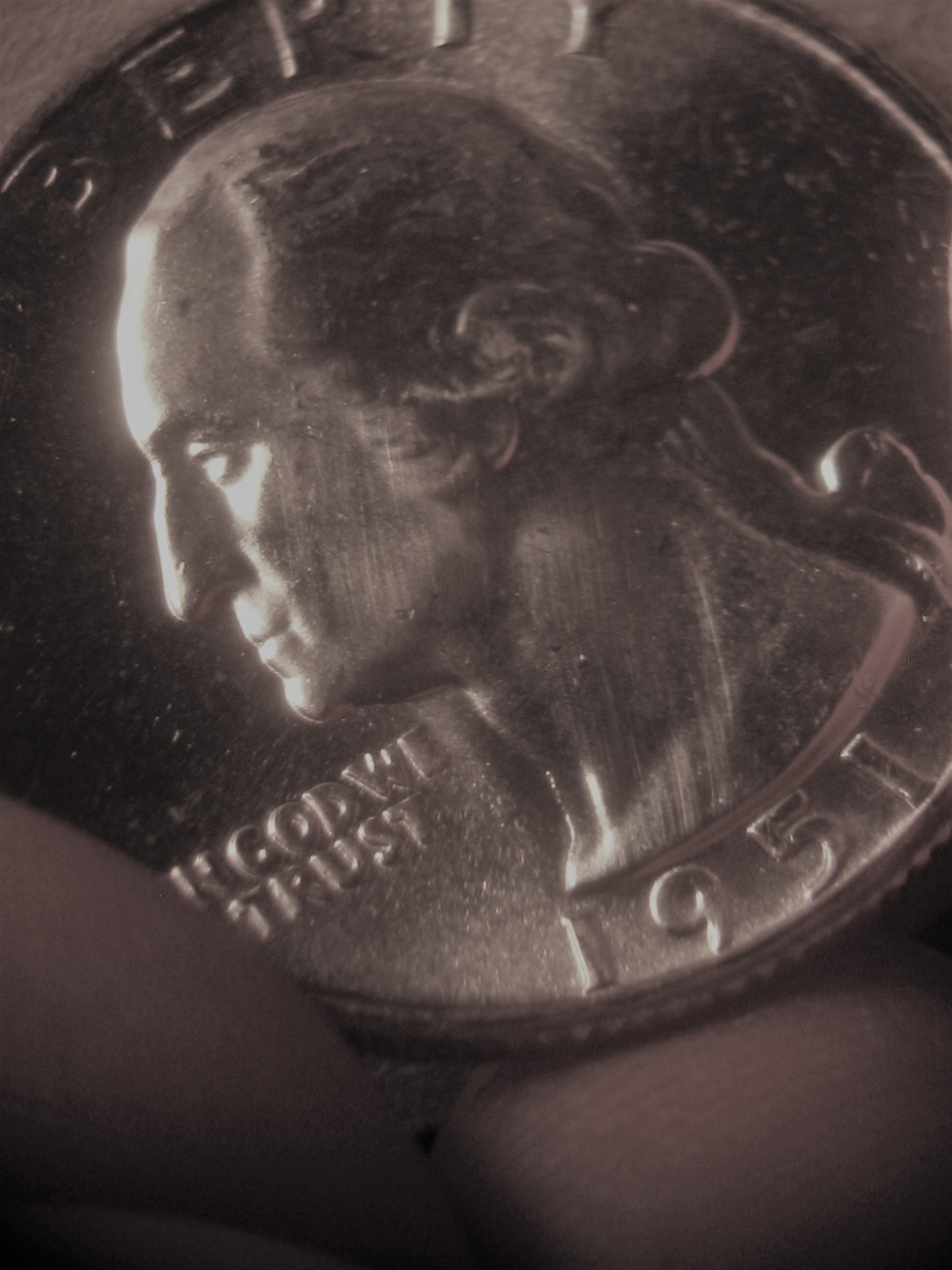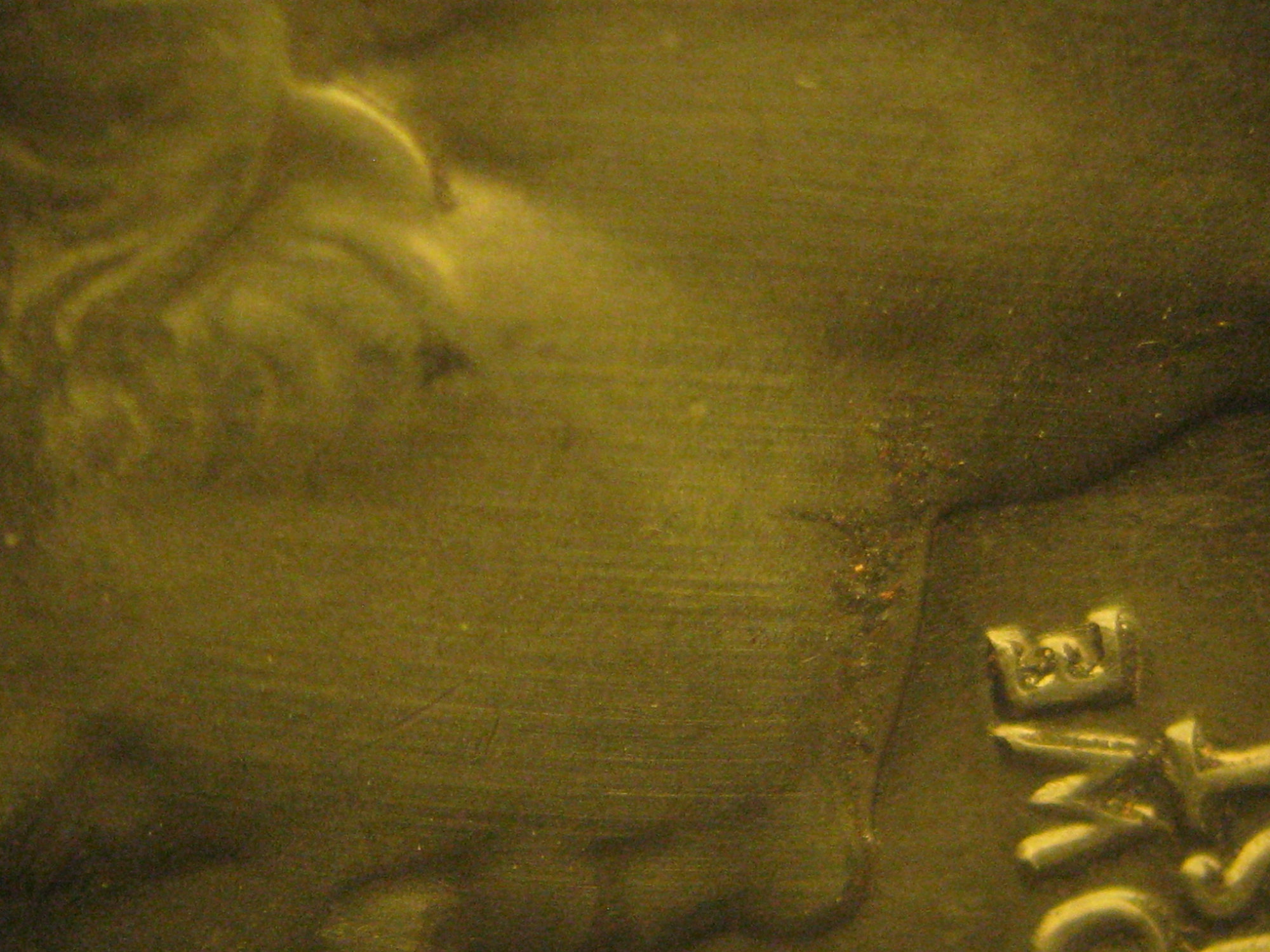ANSWERED: How can you tell this "Wheel Mark" is not a "roller striae" that was not struck out?
 Insider2
Posts: 14,452 ✭✭✭✭✭
Insider2
Posts: 14,452 ✭✭✭✭✭
I describe the marks on both quarters in this thread as "wheel marks." other graders call them "wipes."


What makes me 100% sure they are not roller marks on the original planchet that were not struck out?
0
Comments
Did you post the right image? There was no plastic covering on U.S. mint sets from 1951. The coins were in cardboard inserts.
Nope. That answers the question, it was a made up set as I cut it out of a small sealed square like those used in the 60's.
Flat packs started mid 1955(for proof sets, not sure about mint sets)
Collector, occasional seller
Glad to see this posted. What the heck are these “wheels” anyway? I’ve heard of “counting wheels,” I’ve had a Walker I thought a fine 63-64 bodybag as “machine damage.” I think this has something to counting machines, but I don’t know the story of how it happens between Mint and a flummoxed collector like myself.
Like the time I bought several OBW silver dime rolls. They looked great at first, then under a more proper light I found marks like these on half the coins. I was still happy with the good copies, but it blew my mind to see so many beautiful silver coins wrecked. I bet this is more of a problem on silver than clad Cu/Ni, eh?
YIKES!
I posted the wrong image! The coin I cut out was a 1965 quarter. It had a more obvious wheel mark with some debris left under the chin.
Wheel marks usually come from a counting wheel or a buffing wheel that got too close to the surface.
But you will post the correct image.
Nope, looks about the same. The point of the OP was to say that I cut a coin like this out of original mint package.
It's too bad the mint chose to use a counting method that damaged the coins!
That's the thing, I don't believe they use counting machines and the package was not damaged. That's why I thought the set might be made up and not mint original.
Nearly every Mint state 1974-D doubled die obverse Kennedy 50c I've seen-all from sealed Mint sets (which is quite a few) have parallel scratches across the shield on the eagle's breast, seemingly different than than the so called wheel marks. These are deeper and more limited in area. I have noticed that all 1942-D DDR-001 25c have the wheel marks across the eagle's breast although, of course there was no Mint set involvement in those.
I'll need to check my half dollar. While I believe you, I don't recall ever seeing those marks on any 1974-D 50c I've graded in the past.
As requested, the 1965 25c I should have posted in the OP.
1959 for mint sets.
I'd rather have a wheel mark than a skid mark.
Pete
I hope no one here is checking you out!
Might be in the plastic itself. Looks like it is on the coin but the plastic is hairlined. Come on man, "coin101".
The coin is raw. It's my fault for confusing you.
I accept your apology.
Now, quit ghosting me.
What;s "ghosting?"
"I can see you yet can't hear you."
Good. Please keep it that way. Better yet, see if you can not see or hear me. Yawn.
and here I answer all your questions with a pleasant tone and you go and say that.
Rude.
The marks are not on the plastic. Truth.
I miss Truth. Haven't heard from him in a while.
But I definitely don't seem to miss the Consequences.
how can you tell those are not roller marks that were on the planchet and not struck out during minting?
@davewesen asked: "How can you tell those are not roller marks that were on the planchet and not struck out during minting?"
Great Question! It's very easy. You go first and think about what a roller mark looks like.
Wheel marks/wipe marks are extremely fine compared with roller marks. They also diffract light differently and aren't necessarily perfectly straight like roller marks. Roller marks are coarser, perfectly straight, don't "pop" in the light, and if not struck out, are accompanied by other marks on the planchet that weren't struck out.
Keeper of the VAM Catalog • Professional Coin Imaging • Prime Number Set • World Coins in Early America • British Trade Dollars • Variety Attribution
@davewesen
See above for the answer. All I would change is roller marks are not always accompanied by other "OPSI" and under magnification the surface inside the mark is virtually always "original," unstruck-planchet in color and texture.